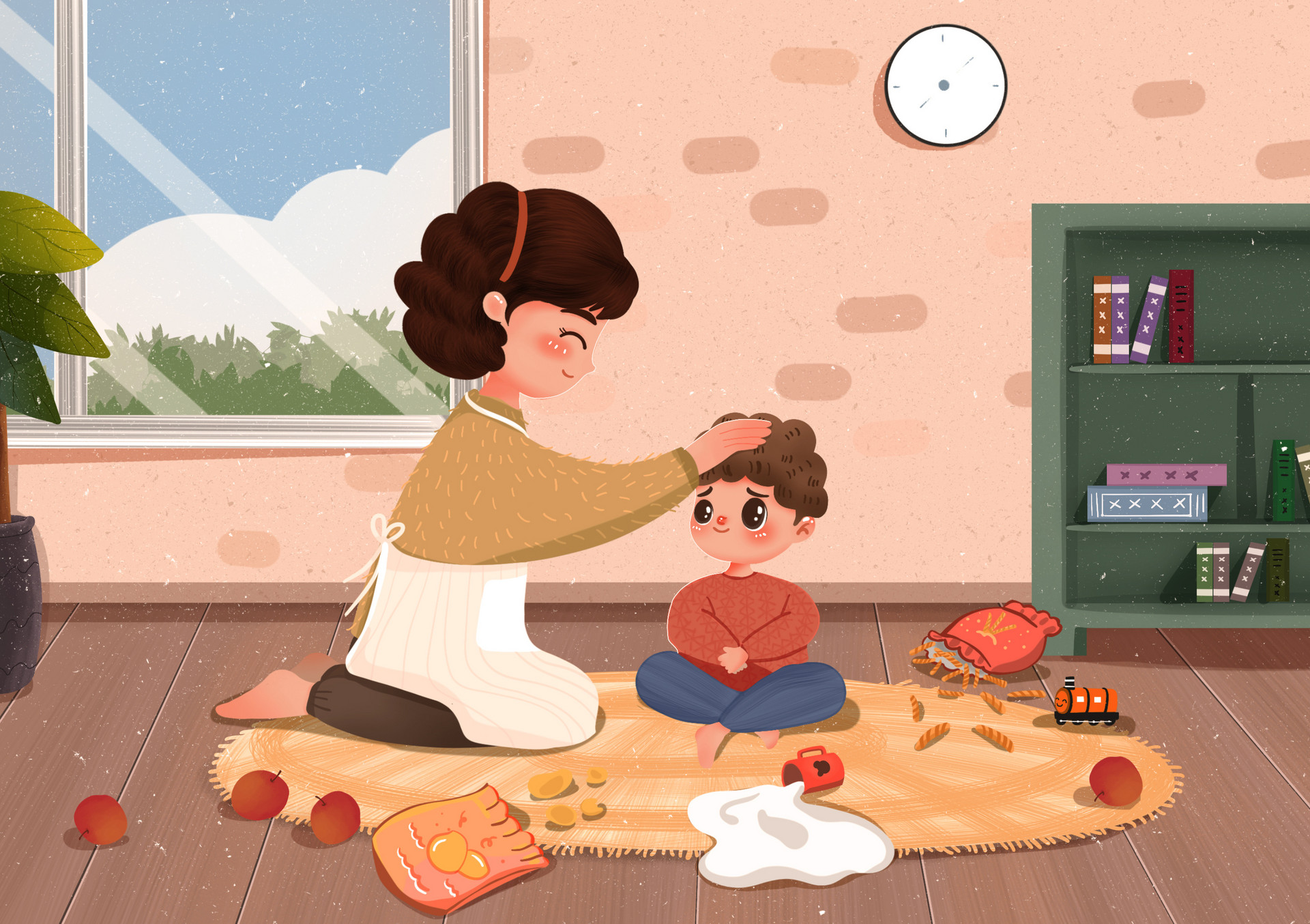How to make children eat more scientifically and nutritiously? Some traditional "diet philosophy" may not be completely correct. Take a look at the facts about 10 common misconceptions and their claims below.
Misconception 1: Children will not get the necessary vitamins and minerals if they don't eat vegetables.
The fact is: Some children don't like to eat vegetables but are still healthy. The reason is that they like to eat fruits. Fruits are good nutritional substitutes for green vegetables like leafy greens and spinach as children gradually learn to accept them.
If your child doesn't eat carrots, you can give him apricots or cantaloupes to supplement the possible lack of vitamin A and beta-carotene. Strawberries or oranges can replace spinach to meet your child's needs for folate. Bananas can replace potatoes as a source of potassium; citrus fruits can replace cabbage to meet the need for vitamin C.
However, vegetables and fruits cannot completely replace each other. Vegetables not only contain essential vitamins and minerals for the body, but also contain various plant chemicals that promote health. So, you must constantly provide vegetables for your child, allowing him to accept and enjoy them. This is very important.
Misconception 2: Dairy products worsen children's colds.
The fact is: Dairy products increase mucus production or thicken the mucus secreted by the nasal cavity, which is completely incorrect. When children have a cold, the mucus in their nose and throat is produced by the cold virus. Dairy products just stick in the throat, making people feel a little uncomfortable.
When a child has a cold, you can continue to give him milk or other dairy products. If he doesn't drink milk, you can give him other liquids like water, fruit juice, thin porridge, or chicken soup until he feels better. Even if a child has no appetite, it is important to make sure he drinks enough water to prevent dehydration and allow mucus to flow out of the nasal cavity.
Misconception 3: Children need to eat red meat (beef and mutton) to prevent anemia.
The fact is: The younger the child, the higher the likelihood of iron deficiency. According to relevant data, 9% of children aged 1-2 who are just learning to walk may have iron deficiency. In children aged 3-5, this proportion drops to 3%, and in children aged 6-11, it is 2%.
Children who are just learning to walk can obtain sufficient iron from their diet, which is good news. Many families are natural vegetarians or do not eat beef and mutton. Besides, meat is hard and difficult for children to chew.
Red meat contains easily absorbable iron, so it is beneficial for children to eat it in moderation. However, children who are just learning to walk can also meet their body's needs for various minerals by eating fortified grain products and bread, dried fruits (such as raisins), spinach, molasses, soybeans, lentils, eggs, fish, and poultry. Children under 10 years old should consume at least 10 mg of iron daily, which is easy to achieve. A cup of cheese (containing about 8 mg of iron) and two small bags of raisins (containing about 2 mg of iron) are sufficient.
If you are unsure if your child is iron deficient, you can consult a professional doctor who will provide you with advice based on your child's feeding history and other factors.
Misconception 4: To prevent obesity, children's fat intake should be limited.
The fact is: For infants and toddlers who are just learning to walk, their brains and bodies are growing rapidly, and 40% of the calories they need each day come from fat. Developing brains have special needs for fatty acids and other components of fat.
Therefore, most experts recommend that children under 2 years old drink whole milk instead of skim milk. Older children still need to consume enough essential fatty acids from their diet for healthy skin growth, hormone secretion, and vitamin absorption.
However, after the age of 2, obtaining about 30% of daily calories from fat is sufficient.
In addition, fat in food makes children feel full. Therefore, if you excessively restrict your child's fat intake, he may compensate by eating more of other foods.
Misconception 5: Eating too much sugar makes children overly active.
The fact is: Eating too much sugar does not have this effect on children. In fact, studies have found that laboratory animals fed a high-sugar diet do not become more active. So where does this incorrect claim come from? It is likely that parents often find that children become unusually active after eating chocolates or drinking soda, both of which contain caffeine. Actually, caffeine is the reason for children becoming overly active.
Misconception 6: Adding new foods to infants' diet should be done with caution because many children are allergic to certain foods.
The fact is: Food allergies are not as common as people think. In fact, only 6% to 8% of children are truly allergic to food. Hives, eczema, vomiting, diarrhea, or in extreme cases, anaphylactic shock are all reactions that occur during food allergies.
The foods that are most likely to cause allergic reactions are: milk, eggs, peanuts, nuts (such as cashews and walnuts), wheat, soybeans, fish, and shellfish. 90% of allergic reactions are caused by the addition of these foods. Therefore, when adding these foods, observe whether your child has any abnormal reactions. If you suspect your child has an allergic reaction, you can take them to the hospital and consult a pediatrician. If necessary, the doctor will perform allergy tests for your child.
Misconception 7: Milk is the only nutritious food for strong bones.
The fact is: Milk is indeed one of the best sources of calcium. However, if your child doesn't like to drink milk, he can still obtain enough calcium from other foods for bone growth and development.
These foods include: yogurt, cheese, soy milk, cabbage, tofu, dark leafy vegetables, and calcium-fortified 100% pure fruit juice (such as orange juice).
Misconception 8: When a child is sick, it's best to eat more when they have a cold and eat less when they have a fever.
The fact is: Never force or restrict your child's food intake at any time. When a child is sick, he needs all the nutritious food and liquids he can get to have the strength to fight off the germs. But if he doesn't want to eat or finishes his meal, you don't have to worry too much.
When a child is sick, allow him to eat what he wants, eat when he's hungry, and there's no need to force him to eat when he's not hungry. Don't forget, the most important thing is to provide enough liquids for the child, such as thin porridge, soup, fruit juice, milk, etc., to prevent dehydration.
Misconception 9: Fruit juice is a healthy thirst-quenching drink.
The fact is: 100% pure fruit juice is definitely more nutritious than soda, but it is not the best beverage for children to drink when they are thirsty. On the contrary, you must limit your child's fruit juice intake. Otherwise, drinking too much fruit juice may reduce your child's appetite for more nutritious foods and may replace milk as the only beverage he wants to drink.
In addition, excessive consumption of fruit juice, which is high in sugar, may damage children's teeth or cause stomach discomfort.
Nutritionists recommend limiting the consumption of fruit juice to 100 ml for children who are just learning to walk. For older children, the daily consumption of fruit juice should not exceed 200 ml. Furthermore, do not consider fruit juice as a thirst-quenching beverage. When a child feels thirsty, plain water is the best choice.
Misconception 10: White bread has no nutritional value.
The fact is: Bread made from whole wheat flour is certainly the ideal choice because it is rich in fiber, which can prevent constipation, heart disease, high blood pressure, and diabetes. However, this does not mean that white bread has no nutritional value.
White bread often contains iron, niacin, folate, vitamin B1, and vitamin B2. If your child doesn't like to eat whole wheat bread, it's okay to let him eat white bread.
As for fiber, he can also obtain it from other foods such as fruits and vegetables.












